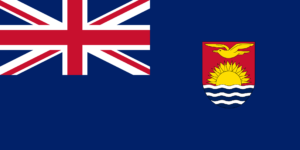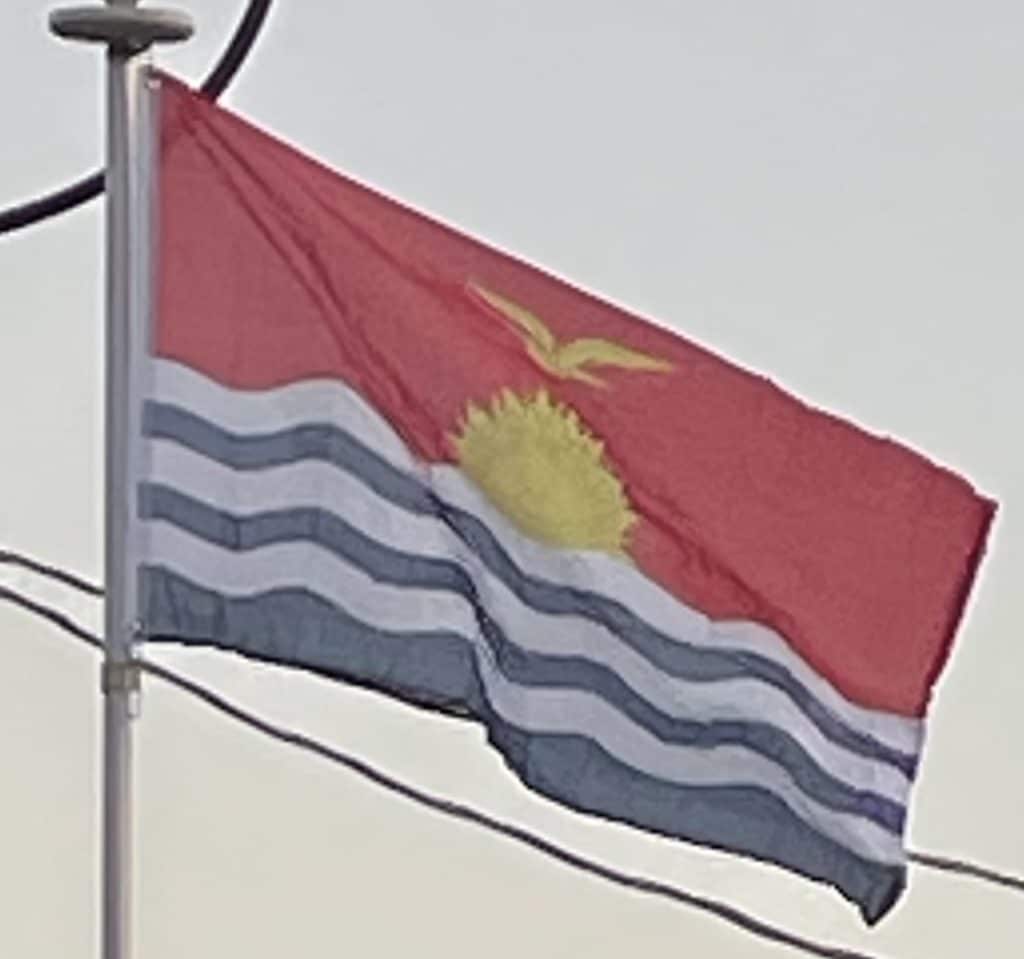The yellow frigatebird symbolizes command over the sea, freedom, and dance patterns. The blue and white wavy bands represent the Pacific Ocean, which surrounds Kiribati and the sun refers to Kiribati’s position astride the Equator.
Kiribati’s flag is an armorial banner, a flag having a design corresponding exactly to that of the shield in the coat of arms, the former badge of the flag of Gilbert and Ellice Islands British colony.

Shortly before independence was granted in 1979, a local competition was held to choose a new national flag, and a design based on the colonial coat of arms was submitted to the College of Arms. The College of Arms decided to modify this design. Both the golden frigatebird and the sun were enlarged to occupy more of the top of the flag, and the width of the blue and white wavy bands was reduced. The local people, however, insisted on the original design, in which the top and bottom halves of the flag were equal, the sun and local frigate bird small, and the various design elements outlined in black. The new flag was hoisted during the independence day celebrations in the capital, Tarawa, on 12 July 1979.
The flag bears a very slight resemblance to the flag of the Latvian Soviet Socialist Republic, as well as to the flag of British Columbia, the Flag of the Isle of Wight, the flag of the Company of Scotland, flag of Italia Marittima and the flag of the city of Bath, Maine.
